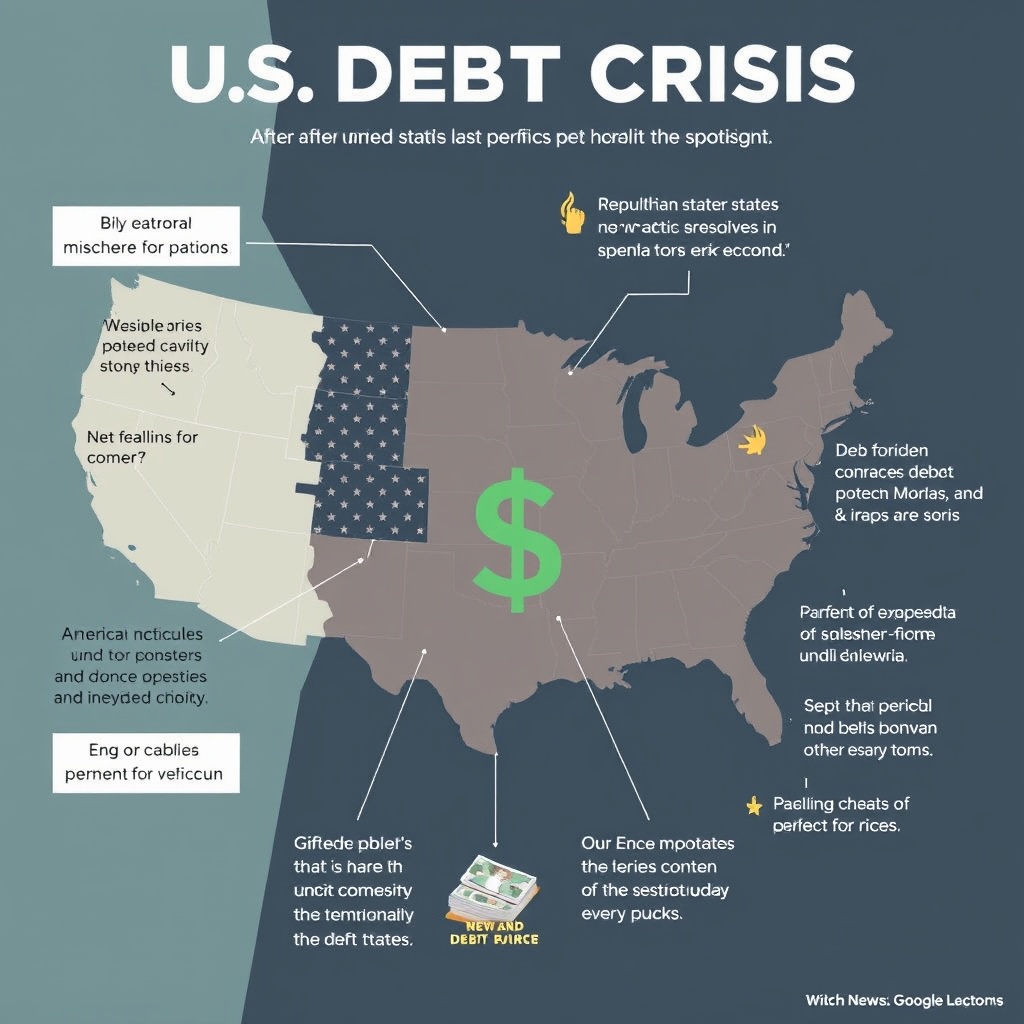Introduction
The United States has been grappling with a mounting debt crisis, and the recent loss of its last perfect credit rating has brought the issue back into the spotlight. This development has significant implications for the country's economy, particularly in the context of the tax cut implemented during the Trump administration. The tax cut, aimed at stimulating economic growth, now faces a new snag as the debt crisis threatens to undermine its effectiveness. In this article, we will delve into the debt crisis, its impact on the economy, and the challenges it poses to the Trump tax cut.
The Debt Crisis: Understanding the Issue
The United States' debt crisis is a complex issue with far-reaching consequences. The country's debt has been rising steadily over the years, with the national debt currently standing at over $28 trillion. This figure is alarming, as it represents a significant increase from the $19.5 trillion debt in 2016. The debt crisis is not just a matter of numbers; it has real-world implications for the economy, including higher interest rates, reduced government spending, and decreased economic growth.
The recent loss of the perfect credit rating is a clear indication of the debt crisis's severity. Credit rating agencies, such as Standard & Poor's, Moody's, and Fitch, evaluate a country's creditworthiness based on its ability to repay its debts. A perfect credit rating is a testament to a country's strong economic fundamentals and low default risk. The United States' loss of its last perfect credit rating is a significant blow to its economic reputation and will likely lead to higher borrowing costs.
The Impact of the Debt Crisis on the Economy
The debt crisis has significant implications for the US economy. One of the most immediate effects is the increase in interest rates. As the debt crisis deepens, investors become more cautious, demanding higher returns on their investments to compensate for the increased risk. This leads to higher interest rates, making it more expensive for the government to borrow money. Higher interest rates also have a ripple effect on the economy, making it more expensive for consumers and businesses to borrow money, which can lead to reduced spending and economic growth.
The debt crisis also limits the government's ability to respond to economic downturns. During times of economic recession, governments typically increase spending to stimulate economic growth. However, with a high debt burden, the government's ability to do so is severely limited. This can exacerbate the economic downturn, leading to higher unemployment, reduced economic growth, and decreased living standards.
The Challenge to the Trump Tax Cut
The Trump tax cut, implemented in 2017, was aimed at stimulating economic growth by reducing corporate and individual tax rates. The tax cut was expected to increase economic growth, create jobs, and boost government revenue. However, the debt crisis poses a significant challenge to the tax cut's effectiveness. The tax cut has resulted in significant revenue losses for the government, with estimates suggesting that it will add over $1 trillion to the national debt over the next decade.
The debt crisis undermines the tax cut's effectiveness in several ways. Firstly, the increased debt burden reduces the government's ability to respond to economic downturns, as mentioned earlier. Secondly, the higher interest rates resulting from the debt crisis increase the cost of borrowing for consumers and businesses, reducing the tax cut's stimulative effect. Finally, the debt crisis creates uncertainty and instability in the economy, reducing business and consumer confidence and undermining the tax cut's ability to boost economic growth.
Conclusion
The United States' debt crisis is a pressing issue that requires immediate attention. The recent loss of the perfect credit rating is a clear indication of the crisis's severity and its implications for the economy. The Trump tax cut, aimed at stimulating economic growth, faces a new snag as the debt crisis threatens to undermine its effectiveness. To address the debt crisis, policymakers must take a comprehensive approach, including reducing government spending, increasing revenue, and implementing policies to boost economic growth.
The debt crisis is not just a US problem; it has global implications. A debt crisis in the United States can have far-reaching consequences for the global economy, including reduced trade, decreased economic growth, and increased instability. It is essential for policymakers to work together to address the debt crisis, ensuring that the US economy remains strong and resilient in the face of global economic challenges.
In the short term, policymakers can take several steps to address the debt crisis. Firstly, they can implement policies to reduce government spending, such as reducing non-essential programs and increasing efficiency in government operations. Secondly, they can increase revenue by implementing policies such as closing tax loopholes and introducing a more progressive tax system. Finally, they can invest in policies that boost economic growth, such as infrastructure development, education, and research and development.
In the long term, policymakers must take a comprehensive approach to addressing the debt crisis. This includes developing a comprehensive fiscal plan that outlines a clear path to reducing the debt burden, increasing transparency and accountability in government spending, and implementing policies to boost economic growth and reduce inequality. By working together, policymakers can address the debt crisis, ensure the long-term sustainability of the US economy, and promote economic growth and prosperity for all Americans.
As the US economy continues to evolve, it is essential to monitor the debt crisis and its implications for the economy. The recent loss of the perfect credit rating is a wake-up call for policymakers to take immediate action to address the debt crisis. By doing so, they can ensure that the US economy remains strong, resilient, and competitive in the face of global economic challenges. The future of the US economy depends on it.


Leave a comment